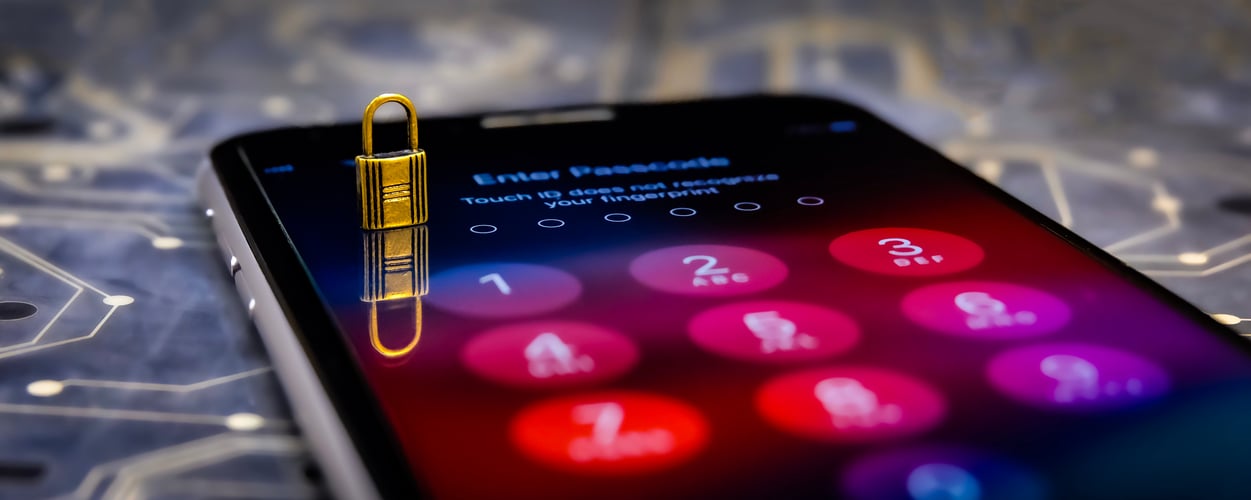
Mobile App Security for Developers and Dummies
Written by Pete Nystrom
Mobile app security for developers and dummies
(Updated 2 April 2018)
Let’s face it – no business wants to become the next Equifax, Target, or Yahoo, i.e. a globally recognized brand that suffers a massive data breach. Companies that fail to allocate time and resources to understand mobile application security threats put their customers’ and employees’ sensitive data in danger. Worst of all, mobile app security dangers may cause a company to suffer costly regulatory penalties, immense brand reputation damage, and significant revenue losses.
Ultimately, there are many mobile security threats that businesses need to take seriously in 2018 and beyond. These threats include:
-
Data leakage: “Unintended disclosure,” aka the inadvertent release of authorized data, accounted for 41% of healthcare data breaches in the first nine months of 2017, according to a study conducted by specialist insurer Beazley. Fortunately, data loss prevention (DLP) tools are available to help businesses quickly identify and address security gaps in their infrastructure and systems.
-
Social engineering: Recent Verizon research indicates that 90% of data breaches occur due to phishing, or cyberattacks that involve the use of malicious emails and websites to gather end users’ personal information. Additionally, studies show users may be more vulnerable to phishing attacks on mobile devices than desktops. Antivirus software, firewalls, and email filters can help reduce malicious traffic. With a training program to teach employees about phishing attacks and other mobile security dangers, a company can help its employees detect phishing attacks before they escalate.
-
Wi-Fi interference: Roughly 25% of mobile devices connect to open and potentially vulnerable Wi-Fi networks. By connecting to these networks, mobile device users put their sensitive data and communications in danger. However, utilizing secure virtual private networks (VPNs) ensures users can limit the risk of cyberattacks on smartphones, tablets, and other mobile devices.
-
Out-of-date devices: Internet of Things (IoT) devices deliver unparalleled connectivity, but they also create many mobile security risks. Conversely, applying regular security patches and upgrades allows users to keep their IoT devices up to date against rapidly evolving cyber threats.
-
Physical device breaches: Some businesses fail to develop or implement security policies and protocols related to employee device use. If hackers infiltrate an employee’s device, a business, its employees, and its customers could suffer the consequences. Company-wide security policies and protocols can help a business limit the risk of physical device breaches. A business should teach its employees about security policies and protocols and update these measures regularly to ensure workers are prepared to deal with cyber threats.
Mobile security must-dos for developers in 2018
Custom mobile app development is a top priority for many businesses in 2018. For mobile development professionals, it is essential to understand and minimize security risks. Thankfully, we’re here to provide mobile web app development security tips to help developers build safe, effective apps.
Now, let’s take a look at 10 mobile security must-dos for developers in 2018:
-
-
Write secure code. Remember, security bugs are the starting point for most hackers who try to break into applications. With secure code in place, mobile development professionals may be able to keep cyber attackers at bay like never before.
-
Encrypt your data. Thanks to data encryption, developers can make it tough for cybercriminals to retrieve sensitive data. Even if encrypted information is stolen, hackers won’t be able to read or use it.
-
Use caution with libraries. Some libraries actually create app security dangers. As such, developers should proceed with caution when they use third-party libraries.
Choose authorized APIs. Use only authorized application programming interfaces (APIs) and cache authorization locally.
Require strong passwords. Create apps that only accept passwords that contain a combination of letters, numbers, and special characters and require users to renew their passwords every three to six months.
-
Leverage tamper-detection technology. Create an alert system that ensures a code’s function will not change if a cybercriminal tries to tamper with it.
Follow the least privilege principle. Use code that only runs with the permissions it needs – and nothing more.
-
Use tokens. Choose tokens over devices to ID sessions. Tokens can be revoked, which makes them more secure if users lose their devices or their devices are stolen.
Follow cryptography best practices. Store keys in secure containers, and never store keys locally. Also, stick to the latest and most-trusted APIs.
-
Perform regular mobile application security testing. Make sure your app is secure by testing it consistently.
-
When it comes to building a secure mobile app from scratch, working with Seamgen is ideal. We help our clients find the right mix of app security and functionality. We ensure businesses can deploy secure, reliable, and user-friendly applications to achieve the best possible results. To learn more about how we can help your company build a secure mobile app, please contact us today.
When it comes to building a secure mobile app from scratch, working with Seamgen is ideal. We help our clients find the right mix of app security and functionality. We ensure businesses can deploy secure, reliable, and user-friendly applications to achieve the best possible results. To learn more about how we can help your company build a secure mobile app, please contact us today.
If you made it to the end of this post, thanks for tuning in! Make sure to check out our other blog posts highlighting tech trends and updates.
Protect your App Against Data Breaches Before it’s a Problem








